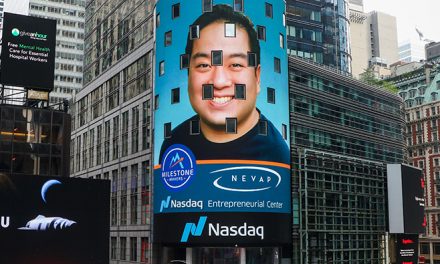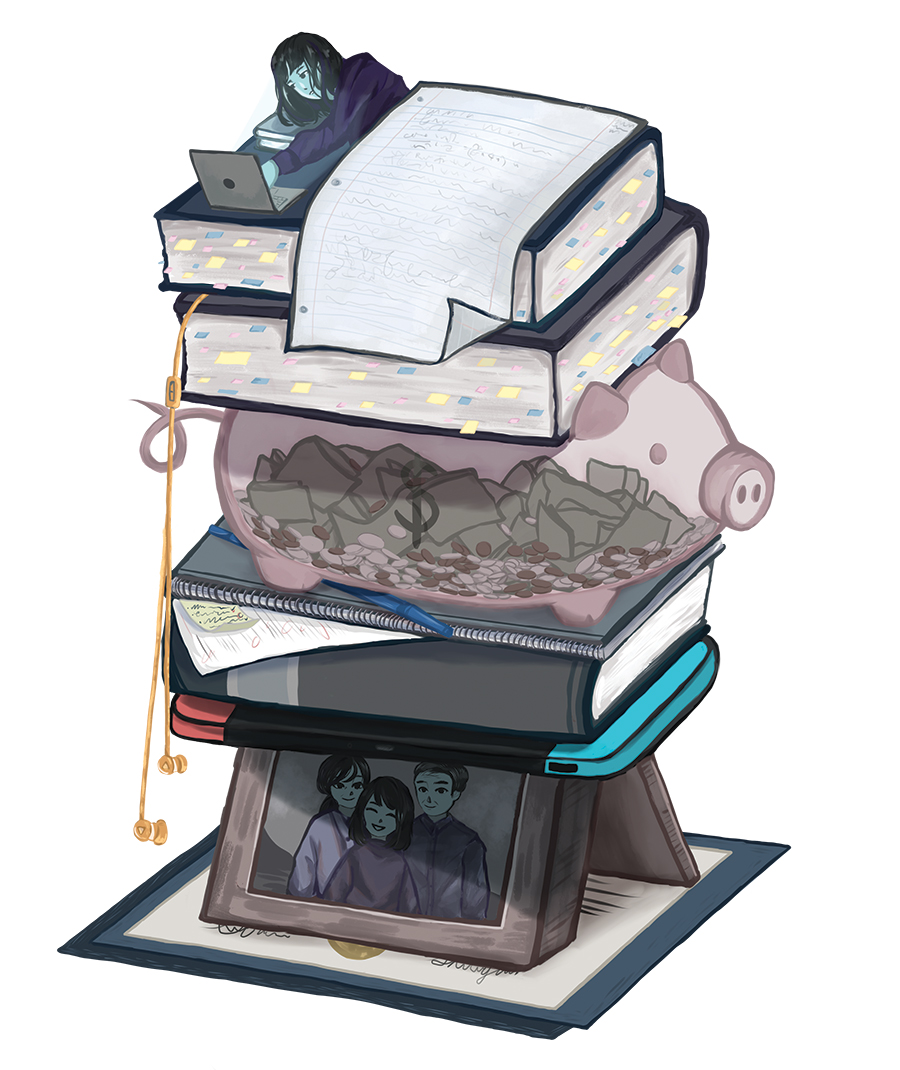
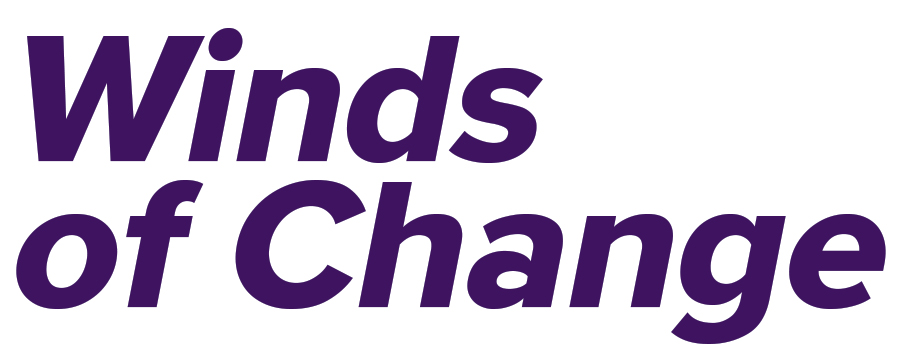
Some pandemic lessons may prompt permanent societal changes — across many areas of life.
Illustrations by Rosa Li
We all know the COVID-19 pandemic has brought a change to every aspect of life. We’ve seen how work and school looked drastically different than usual — and so did health care, transportation, nutrition and more. In many cases, inequities were highlighted in new ways. So we asked UC Davis experts about what society has learned from this experience and what pandemic-driven changes could be here to stay.
The pandemic took a substantial toll on education.
The COVID-19 pandemic highlighted the vital role our school system plays in daily life, from learning to related services like nutrition programs, after-school support, and health and mental health care. In the absence of in-person teaching, countless new stressors plagued American families.
So what lessons in education can be learned from this experience, and what changes could be made?
UC Davis researchers have been studying the pandemic’s effects on education. Michal Kurlaender, professor and department chair in the School of Education, investigates students’ pathways in K-12 and postsecondary education, and Kevin Gee, associate professor in the School of Education, examines how schooling systems influence the health and well-being of children in the K-12 setting.
Kurlaender and colleagues at UC Davis, in partnership with the California Student Aid Commission, surveyed almost 100,000 college students about their experiences during the pandemic in November 2020. Though they found the pandemic took a substantial toll on students overall, they also learned disruption and stress was disproportionally felt by Black and Latinx students, lower-income students and those who attend community colleges.
Suggestions for change included investments in financial aid reform to reach more students; new resources to support students’ basic needs and housing; expanded health and mental health services; enhanced connectivity; and improved college advising.
“It’s hard to ask students to focus on class work, when around them they are experiencing so much chaos,” Kurlaender said. “They are doing school, but for many they are experiencing job loss and illness. And just because the pandemic is winding down, these have had lasting effects.”
The state of California recently announced a $100 billion investment plan for helping public schools recover. Some of the money will go toward universal pre-K, summer and after-school programs, and teacher preparation.
The one-time investment, however, could mean potential challenges down the line, Kurlaender said.
“I hope that, as researchers, we are able to document what we are learning from these investments in this period and make strong claims about what is needed for longer term for younger kids but also college students,” she said.
And returning in the fall doesn’t solve all the problems the pandemic created. Some students have fallen through the cracks and many still have lingering problems due to the ongoing effects of the pandemic. In addition, social justice issues have come to the forefront.
“You have to think about the layers of political and social issues on top of this pandemic,” Gee said. “You realize how important it will be for coming back in the fall, and the services that students will need, especially students of color. That said, we’re going to really understand the true price tag to get these kinds of services.”
Amidst the crises, the researchers said, there have been a few positives: Schools learned they could pivot quickly and some students really benefited from remote learning. In the future, some form of at-home study could be considered for those who need it.
“Flexibility just matters to kids and families,” Kurlaender said. “I see that there is good stuff from this and some things really worked. We can serve more students, those with different needs and for whom the traditional system wasn’t working. Same in higher education if we can bring more access to people, more classes, more types of instruction, more opportunities, then this is a great lesson from this experience.”
“Morning commutes are low, but traffic during the midday — that traffic is actually higher than it was before the pandemic.”
Traffic patterns fluctuated.
Morning commutes may not be as crowded as they were in 2019, but that doesn’t mean fewer cars are on the roads.
Giovanni Circella, director of the 3 Revolutions Future Mobility Program at the UC Davis Institute of Transportation Studies, said the analysis of data from sources like Google Maps, automated traffic counters and data aggregators reveals that car travel rebounded strongly when the strictest of the pandemic restrictions were lifted. Now its total volume is similar to pre-pandemic levels. Many people who used to travel to an office still work remotely, but those people have made up for their decreased commutes with midday social or shopping trips, he said.
“Morning commutes are low, but traffic during the midday — that traffic is actually higher than it was before the pandemic,” Circella said.
He said public transit ridership fell dramatically at the start of the pandemic, and survey data of U.S. and Canadian cities show that many people who were taking transit by choice before the pandemic started driving or even bought a new car. Meanwhile, transit riders who couldn’t afford a car — who tend to be people of color — stuck it out, he said.
White-collar workers are now preparing for a new normal that could include some mix of in-person and remote work.
Circella said about a third of people can do their jobs remotely and estimated that if only a third of them continued to work remotely a day or two a week, the number of people driving less could be larger than the combined ridership of all public transit in the United States.
While these changes likely won’t affect emissions levels, even a small reduction in drivers during peak commute time can have a big impact on traffic patterns — which could take two or three years to rebound, he said.
“It will buy us some more time to find policies to alleviate traffic congestion.”

Workplace norms could be forever changed.
The job world, experts predict, will never return to “normal.”
Whether you are back to work full-time or part-time, changes are coming. They might include:
- Downsizing office spaces. Employers may need only 25 percent of the space they did.
- A very hot job market means recruiting and retaining talent will be harder.
- Business meetings and conferences are back, but they may not all be live again.
- Many of your co-workers have retired.
Other considerations — you may have a different workspace, or one you are sharing. Hybrid workspaces bring up a host of other issues, said Kim Elsbach, professor of management and the author of a series of studies on workplace behavior.
- Territorialism, a 2003 study by Elsbach, who is the Stephen G. Newberry chair in leadership at the Graduate School of Management, found that some people go to great extents to claim their spaces — whether by leaving behind personal items, squatting in spaces beyond the agreed-to time limit or pairing up with colleagues to manipulate or tag-team spaces.
- Bad internet (at home) can be a factor.
- Lack of separation between home and work. Work days become work evenings and weekends.
Additionally, Elsbach, the author of a study in 2010 on face-time, found that many managers are not convinced work-at-home employees are really putting in a full day without evidence: “If I can’t see you working, I don’t know if you are working.”
Good “citizenship” at work and new ways of evaluating employees’ value — other than through face-time — will need to be instituted by employers, she said.
Still, some traditions remain. “We are seeing the workforce is reinvigorated to be back in the workplace, working together — people are happy to have happy hours again,” said Suzy Taherian, a lecturer in the Graduate School of Management at UC Davis and chief financial officer for an Australian online exchange company with offices throughout the world.
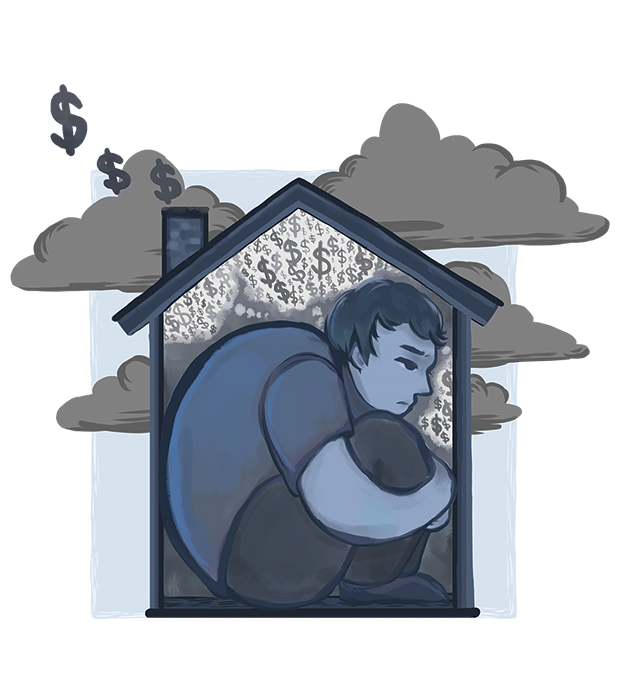
Financial anxiety and too much togetherness added to the psychological impact.
Financial anxiety — even if economics were not actually a factor — created a combination of emotional, psychosocial and overall hardships during the pandemic that affected families of all incomes, said UC Davis psychologists and sociologists in a series of studies conducted during COVID-19. Furthermore, being confined to home for long periods of time resulted in some relationship improvements, but clearly stressed other domestic situations.
Some families thrived, many others didn’t
In a study of families that experienced work changes but not job loss in spring 2020, psychology professor Paul Hastings and colleagues discovered in preliminary findings that about 20 percent of almost 500 surveyed reported thriving family relationships. However, almost 15 percent reported feeling emotionally distressed and worried about finances, even though their economics had not really changed. “Their responses indicate that the pandemic is detrimentally impacting well-being for many families,” he said. “This affects family functioning.
“This could suggest that financial worry is a stressor that permeates across the socioeconomic spectrum during this period of societal economic uncertainty.”
Coping
In another series of studies authored by Clare Cannon, assistant professor of human ecology, a rise in intimate partner violence was reported early in the pandemic. She and co-authors found empirical support for the idea that confining people to their homes to protect them from catching or spreading the COVID-19 virus may increase their risk of experiencing intimate-partner violence and its associated mental health costs. Thus, public health policy may have caused one issue while resolving others. “It is certainly likely that this exposure contributes to participants who experienced IPV reporting themselves as being less resilient,” she said.
Added Hastings: “And the pandemic isn’t over yet. The psychological impacts of the pandemic are likely to persist after vaccinations and reopening, and we need to be ready to support families through the return to in-person school and work.”
Gun violence surged.
The pandemic disrupted nearly every aspect of life and made a lot of people nervous. Thousands of Californians responded by buying guns or unlocking and loading their guns.
Nicole Kravitz-Wirtz, an assistant professor with the Violence Prevention Research Program in the Department of Emergency Medicine at UC Davis Health, led the group’s 2020 statewide firearm and violence survey, which gave insight into a year that saw a 30 percent jump in homicides in large cities across the country, according to the National Commission on COVID-19 and Criminal Justice.
“When we asked respondents about their reasons for acquiring a new firearm or changing how they store them, most of their responses had some basis in feelings of fear related to pandemic-induced uncertainty about the future and disconnection from more traditional institutions of social and community life,” she said. The UC Davis survey showed an estimated 110,000 Californians bought guns as a direct response to the pandemic, with most citing fears of lawlessness. An estimated 55,000 people started keeping guns they already owned loaded and at the ready.
“The scientific evidence is very consistent — easy access to an unsecured firearm in the home is associated with an elevated risk for firearm injury and death for everyone in the home, particularly unintentional shootings and completed suicide,” Kravitz-Wirtz said.
And while she said it’s too early to know the exact reasons for the jump in violence last year, many organizations that try to prevent violence, like those that follow up with people hospitalized by it, had to suspend services because of the pandemic.
She said prioritizing community violence intervention programs could go a long way to keeping more people safe, especially in Black and brown communities that have long been cut off from housing, employment and other stabilizing factors.
“Neighborhoods that have experienced structural racism and systemic disinvestment, often intentional disinvestment, for generations, are more vulnerable to violence,” she said.
Some food trends were positive.
How we shop for our food and even what we eat changed over the past few months. Debbie Fetter ’12, Ph.D. ’18, assistant professor of teaching in the Department of Nutrition, said some positive lessons about food have come from this experience.
- Planning ahead. At the height of the pandemic, people went to the grocery store less frequently to avoid crowds. “Planning ahead and coming with your list is a habit we can take forward because then we can know what we are going to buy and that can cut down on our impulse buys, which tend to be more empty calorie food options,” Fetter said.
- Acknowledging the effects of stress on eating. “Life is full of stressful events and this was a big one. Life will be filled with more stressful events. So this could be a learning opportunity to make improvements with strategies centered around our eating choices.
- Buying more canned and frozen food. When people were stockpiling food, they were forced to buy more foods with a longer shelf life. Fetter said such items often can be more affordable and have a higher nutritional value than their regular produce counterparts.
- Having fun. The pandemic also got more people to grow their own foods and experiment with cooking. Baking bread became a major trend that could carry forward. “There also have been fun social media trends about food,” Fetter said, noting “nature’s cereal” as an example. Just combine berries, coconut water and some ice cubes for a healthy, crunchy snack. “Creating a community around food has been one of the positive takeaways,” Fetter said. Sharing on TikTok is optional.
“People really took this pandemic to heart and decided that since they are home all the time, they might be able to take the time that is needed to be an excellent pet owner.”
Veterinary needs jumped — and so did veterinarian stress.
Our pets really helped us cope during the pandemic. In fact, 12.6 million U.S. households got a new animal in 2020, according to a COVID-19 Pulse Study by the American Pet Products Association. Karl Jandrey, M.A.S. ’09, associate dean and professor of clinical small animal emergency and critical care in the School of Veterinary Medicine, said he and his colleagues are feeling the increase.
“I think people really took this pandemic to heart and decided that since they are home all the time, they might be able to take the time that is needed to be an excellent pet owner,” he said.
The demand for veterinary care at UC Davis was already on the rise — growing about 5 percent to 10 percent each year — and the pandemic pushed growth 20 percent to 30 percent over the past year, Jandrey said.
As a result, veterinarians at UC Davis and beyond are exploring changes.
- Parking lot waiting rooms. Introduced for health reasons last year, parking lot waiting rooms could stick around, Jandrey said. Regular waiting rooms may simply not be necessary or appointments in general could change. For example, perhaps clinics will have drop-off hours in the morning, see the animals throughout the day and then have pick-up times in the evening. “Where the animals are not critically ill, this could be the thing of the future,” he added.
- Telehealth. A group at the School of Veterinary Medicine is exploring veterinary telehealth, which has been on the radar for several years. Now, a committee will determine how best to implement a program. “Rechecks could potentially be done more effectively through telehealth, and there are also some specialties that might easily adapt,” Jandrey said.
- Social justice. The past year also highlighted the need for reforms in critical areas. As part of a regular review of admissions practices, the UC Davis vet school will soon determine how to remove barriers to education for underserved populations. Considerations include how test scores, grade point average, life experience and other factors are weighed. “We are trying to move the needle,” Jandrey said. “It’s not a quick fix.”
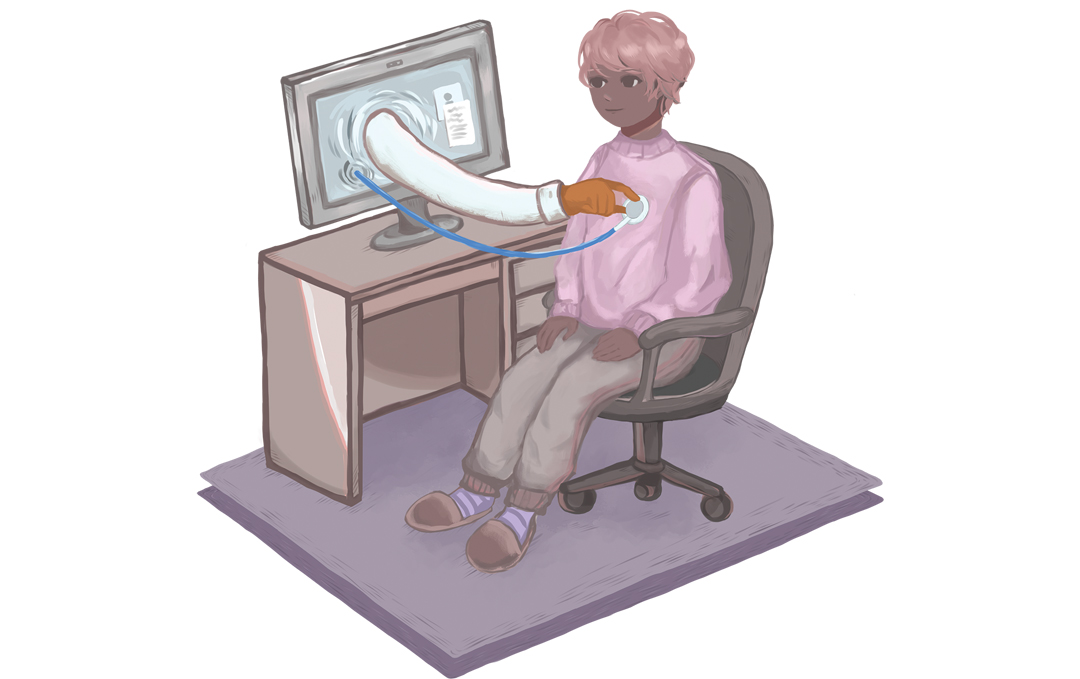
Telehealth emerged as a useful tool.
The pandemic forced a lot of people out of their comfort zones, and that includes doctors.
James Marcin, a professor of pediatric critical care and director of the Center for Health and Technology at UC Davis Health, said prior to 2020, many people assumed patients would only want to see their doctors in person.
“There is inertia to overcome,” he said. “They would say, ‘Oh, I can’t do that over video.’”
Fortunately, UC Davis Health was well-positioned to find out if they could. While smaller clinics struggled to find a way to conduct video calls (some even used Facebook, Marcin said) or just used the phone to reach patients, UC Davis was already a leader in telemedicine — especially at the Children’s Hospital.
“We were very fortunate to be positioned to be able to turn on a dime and ramp things up,” he said, noting that prior to COVID-19, 1 or 2 percent of all visits were conducted remotely. During the peak of the shutdowns, that figure jumped to 70 percent, and remains at about 20 to 30 percent now.
Marcin said patients loved the convenience of being able to squeeze in a quick visit without sitting in traffic or missing a full day of work, and it turns out the technology exists to make many things possible remotely: monitoring blood glucose levels, checking oxygen saturation and even collecting data from a pacemaker. That allows patients to leave the hospital a day earlier — if they choose — while doctors continue to monitor their vital stats remotely. In the future it could also mean big changes to the way chronic diseases like diabetes are treated.
“We’re not so far away from being able to do a much better job of monitoring patients at their home continuously,” Marcin said, noting that having daily or even hourly data could be invaluable.
“COVID is a horrible thing, but we’re really trying to reimagine the way that we deliver care,” he said. “We’re just taking this as an opportunity to reset.”


